Wei Zuo
DreamDance: Animating Character Art via Inpainting Stable Gaussian Worlds
May 30, 2025Abstract:This paper presents DreamDance, a novel character art animation framework capable of producing stable, consistent character and scene motion conditioned on precise camera trajectories. To achieve this, we re-formulate the animation task as two inpainting-based steps: Camera-aware Scene Inpainting and Pose-aware Video Inpainting. The first step leverages a pre-trained image inpainting model to generate multi-view scene images from the reference art and optimizes a stable large-scale Gaussian field, which enables coarse background video rendering with camera trajectories. However, the rendered video is rough and only conveys scene motion. To resolve this, the second step trains a pose-aware video inpainting model that injects the dynamic character into the scene video while enhancing background quality. Specifically, this model is a DiT-based video generation model with a gating strategy that adaptively integrates the character's appearance and pose information into the base background video. Through extensive experiments, we demonstrate the effectiveness and generalizability of DreamDance, producing high-quality and consistent character animations with remarkable camera dynamics.
MikuDance: Animating Character Art with Mixed Motion Dynamics
Nov 14, 2024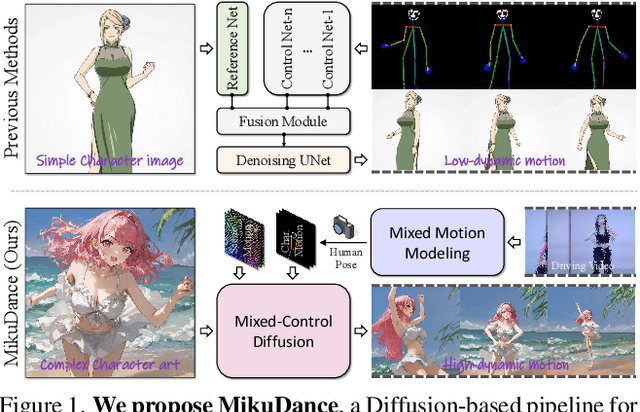
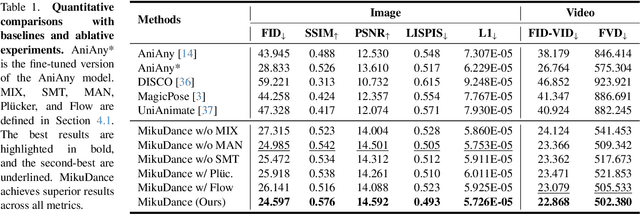


Abstract:We propose MikuDance, a diffusion-based pipeline incorporating mixed motion dynamics to animate stylized character art. MikuDance consists of two key techniques: Mixed Motion Modeling and Mixed-Control Diffusion, to address the challenges of high-dynamic motion and reference-guidance misalignment in character art animation. Specifically, a Scene Motion Tracking strategy is presented to explicitly model the dynamic camera in pixel-wise space, enabling unified character-scene motion modeling. Building on this, the Mixed-Control Diffusion implicitly aligns the scale and body shape of diverse characters with motion guidance, allowing flexible control of local character motion. Subsequently, a Motion-Adaptive Normalization module is incorporated to effectively inject global scene motion, paving the way for comprehensive character art animation. Through extensive experiments, we demonstrate the effectiveness and generalizability of MikuDance across various character art and motion guidance, consistently producing high-quality animations with remarkable motion dynamics.
Building a great multi-lingual teacher with sparsely-gated mixture of experts for speech recognition
Jan 04, 2022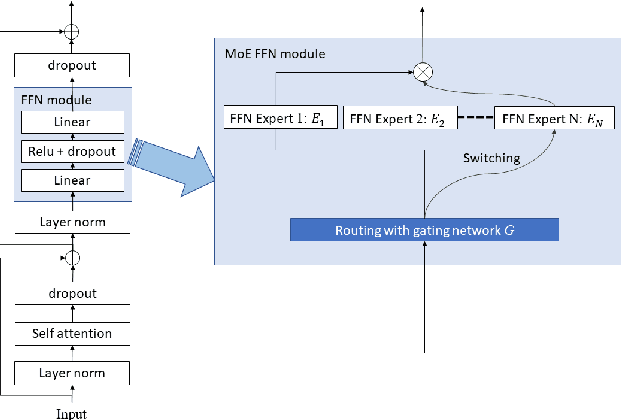
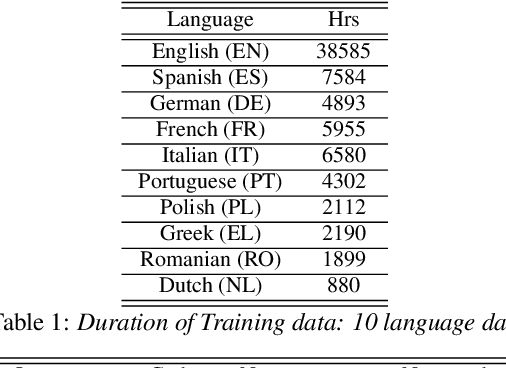
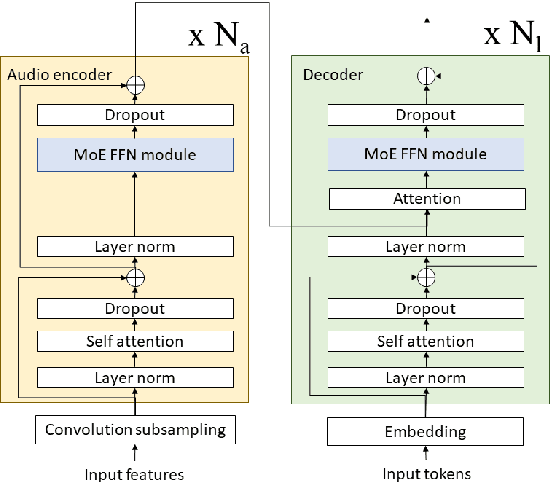
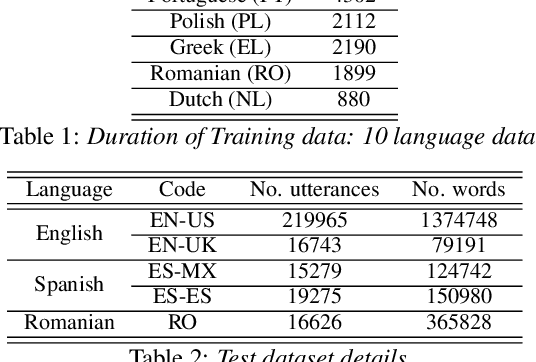
Abstract:The sparsely-gated Mixture of Experts (MoE) can magnify a network capacity with a little computational complexity. In this work, we investigate how multi-lingual Automatic Speech Recognition (ASR) networks can be scaled up with a simple routing algorithm in order to achieve better accuracy. More specifically, we apply the sparsely-gated MoE technique to two types of networks: Sequence-to-Sequence Transformer (S2S-T) and Transformer Transducer (T-T). We demonstrate through a set of ASR experiments on multiple language data that the MoE networks can reduce the relative word error rates by 16.3% and 4.6% with the S2S-T and T-T, respectively. Moreover, we thoroughly investigate the effect of the MoE on the T-T architecture in various conditions: streaming mode, non-streaming mode, the use of language ID and the label decoder with the MoE.
Reconstruct Anomaly to Normal: Adversarial Learned and Latent Vector-constrained Autoencoder for Time-series Anomaly Detection
Oct 14, 2020



Abstract:Anomaly detection in time series has been widely researched and has important practical applications. In recent years, anomaly detection algorithms are mostly based on deep-learning generative models and use the reconstruction error to detect anomalies. They try to capture the distribution of normal data by reconstructing normal data in the training phase, then calculate the reconstruction error of test data to do anomaly detection. However, most of them only use the normal data in the training phase and can not ensure the reconstruction process of anomaly data. So, anomaly data can also be well reconstructed sometimes and gets low reconstruction error, which leads to the omission of anomalies. What's more, the neighbor information of data points in time series data has not been fully utilized in these algorithms. In this paper, we propose RAN based on the idea of Reconstruct Anomalies to Normal and apply it for unsupervised time series anomaly detection. To minimize the reconstruction error of normal data and maximize this of anomaly data, we do not just ensure normal data to reconstruct well, but also try to make the reconstruction of anomaly data consistent with the distribution of normal data, then anomalies will get higher reconstruction errors. We implement this idea by introducing the "imitated anomaly data" and combining a specially designed latent vector-constrained Autoencoder with the discriminator to construct an adversary network. Extensive experiments on time-series datasets from different scenes such as ECG diagnosis also show that RAN can detect meaningful anomalies, and it outperforms other algorithms in terms of AUC-ROC.
 Add to Chrome
Add to Chrome Add to Firefox
Add to Firefox Add to Edge
Add to Edge